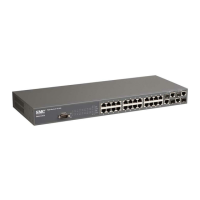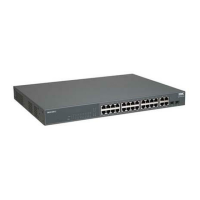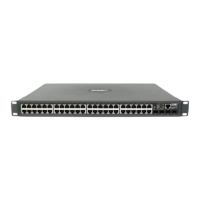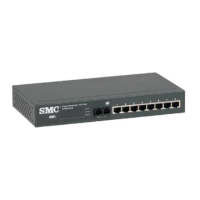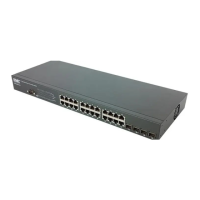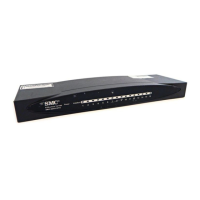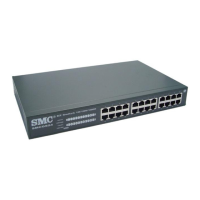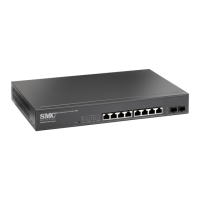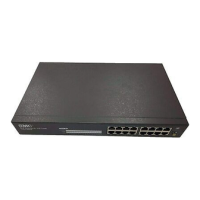C
OMMAND
L
INE
I
NTERFACE
4-164
Example
Link Aggregation Commands
Ports can be statically grouped into an aggregate link (i.e., trunk) to
increase the bandwidth of a network connection or to ensure fault
recovery. Or you can use the Link Aggregation Control Protocol (LACP)
to automatically negotiate a trunk link between this switch and another
network device. For static trunks, the switches have to comply with the
Cisco EtherChannel standard. For dynamic trunks, the switches have to
comply with LACP. This switch supports up to four trunks. For example, a
trunk consisting of two 1000 Mbps ports can support an aggregate
bandwidth of 4 Gbps when operating at full duplex.
Console#show rate-limit
Fast ethernet granularity: 1000
Gigabit ethernet granularity: 33300
Console#
Table 4-44 Link Aggregation Commands
Command Function Mode Page
Manual Configuration Commands
interface
port-channel
Configures a trunk and enters
interface configuration mode
for the trunk
GC 4-146
channel-group Adds a port to a trunk IC (Ethernet) 4-166
Dynamic Configuration Command
lacp Configures LACP for the
current interface
IC (Ethernet) 4-167
lacp system-priority Configures a port's LACP
system priority
IC (Ethernet) 4-168
lacp admin-key Configures a port's
administration key
IC (Ethernet) 4-170
lacp admin-key Configures an port channel’s
administration key
IC (Port Channel) 4-171
